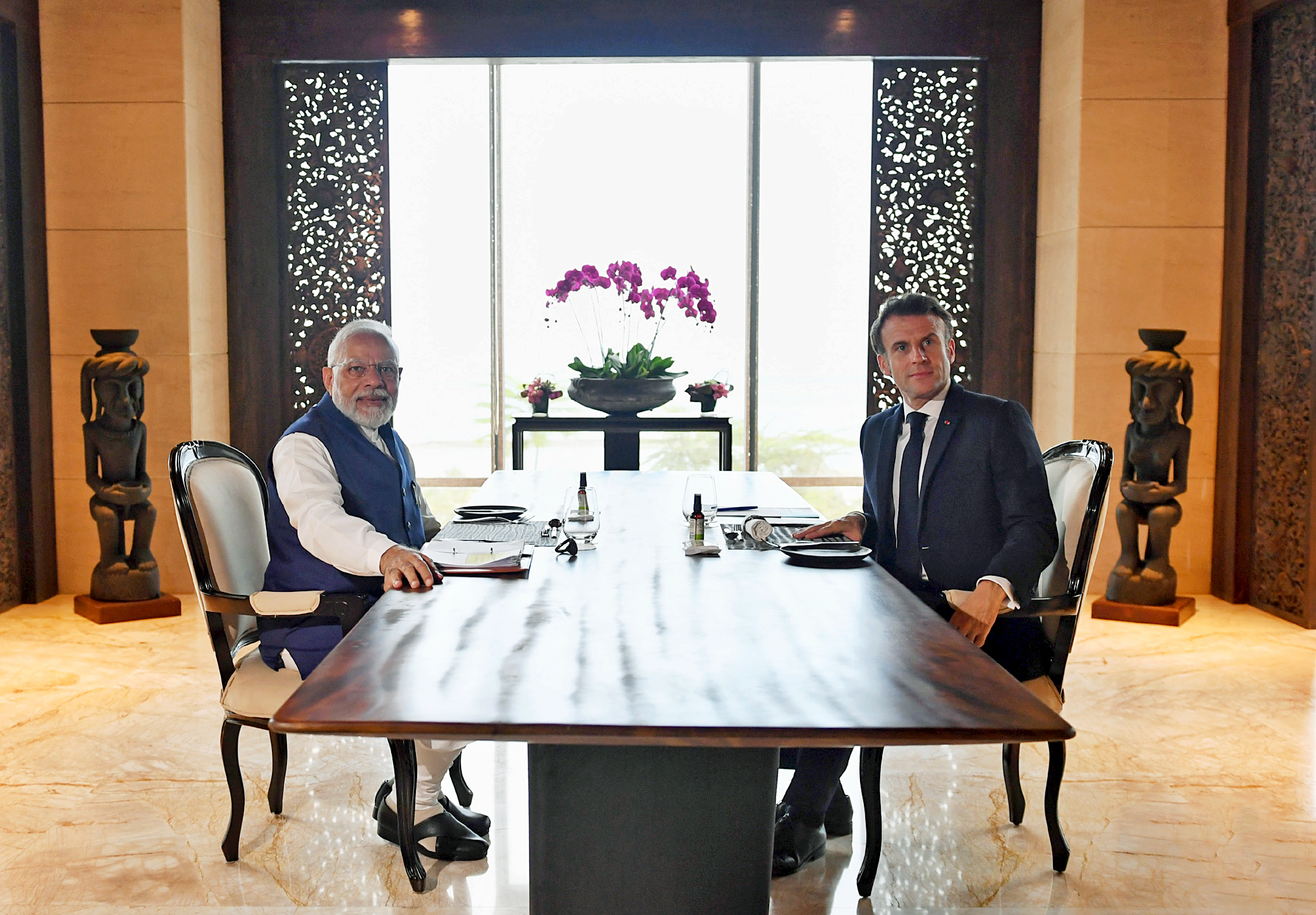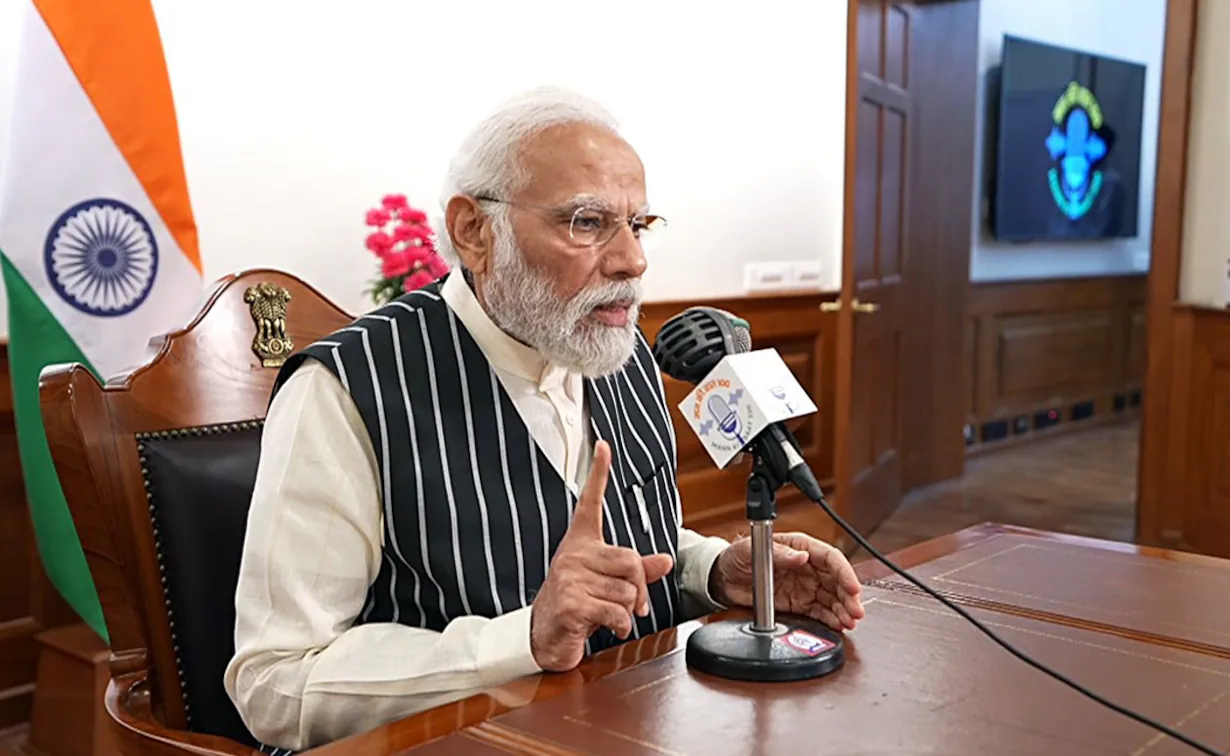A major EU-wide push towards engaging with the region came in 2019 when the EU labelled China as a ‘systemic rival’. From 2019 onwards, France, the United Kingdom, the European Union (EU), Germany, the Netherlands, and the Czech Republic articulated their Indo-Pacific strategies
Karan Phular
The Indo-Pacific is a region that is experiencing both dynamic economic growth and intensifying security competition. Three-fourths of Europe’s trade passes through the Sea Lines of Communications (SLOCS) in the region. Connectivity, security, sustainable development and supply chain resilience are among factors propelling an enhanced European engagement with the region.
Given that three-fourths of Europe’s trade passes through the Sea Lines of Communications (SLOCS) in the region, the Indo-Pacific has gained in prominence in the economic-security discourse of major European players. The Russia–Ukraine war has further accelerated Europe’s engagement, with a renewed commitment to uphold a rules-based international order for ensuring economic security.
A major EU-wide push towards engaging with the region came in 2019 when the EU labelled China as a ‘systemic rival’. From 2019 onwards, France, the United Kingdom, the European Union (EU), Germany, the Netherlands, and the Czech Republic articulated their Indo-Pacific strategies. These strategies differ according to their perceived interests. France and UK’s regional presence, for instance, includes military deployments because of territories and populations in the region, while Germany’s and EU’s strategies are more inclined towards the economic aspect. The EU has also been trying to take on the role of a security provider through maritime maneuvers in the Indian Ocean Region (IOR), a geographic subset of the larger Indo-Pacific.
France
France is a resident nation of both the Indian and the Pacific Oceans. It has major interests in the region. These interests include nine million square kilometers of France’s exclusive economic zone (EEZ), the second largest in the world. Around two million French citizens reside in the region. France also maintains a permanent military presence, with more than 7,000 personnel stationed in its overseas territories like New Caledonia, French Polynesia, Wallis and Futuna, Reunion Island, Mayotte, and the French Southern and Antarctic Lands.
France’s Indo-Pacific strategy rests on four pillars—defense and security; economy, connectivity, research, and innovation; multilateralism and rule of law; and climate change, biodiversity, and sustainable management of oceans. France’s Indo-Pacific strategy reflects the region’s growing significance and France’s commitment towards promoting security, economic growth, and sustainable development.
United Kingdom
In March 2021, the United Kingdom (UK) published a document titled ‘Global Britain in a Competitive Age: The Integrated Review of Security, Defense, Development and Foreign Policy’ outlining the UK’s vision in the world over the next two decades. The document describes a ‘tilt to the Indo-Pacific’, and the need to priorities British economic and security interests in the region.
Like France, the UK’s Indo-Pacific strategy has four pillars—health; trade and investment; defense and security; and climate change. It calls for strengthening supply chain resilience of critical goods and raw materials. It specifically mentions cooperation with ASEAN, India, Japan and South Korea for regional stability and prosperity.
The UK has an existing five power defense agreement with Malaysia, Singapore, Australia and New Zealand, dating back to 1971. The UK, along with the US, also entered into a nuclear submarine deal, AUKUS, in September 2021. HMS Queen Elizabeth aircraft carrier strike group was deployed to the Indo-Pacific in 2021 for the first time, signifying an enhanced maritime role.
The UK’s strategic presence in the region, therefore, has been enhancing in recent times. Since both UK and France have territories and citizens residing in the region, they have a pronounced regional security presence. So far, both powers have been more active in Western IOR in counter-piracy missions. The UK also holds tri-service military exercises like Konkan Shakti with India (held for first time in October 2021), while France conducts a range of bilateral exercises with India, including naval exercises like Varuna, among others.
Germany
‘Policy Guidelines on the Indo-Pacific’ adopted by the German government in September 2020 highlight Berlin’s aspirations in shaping international order along with allies while simultaneously protecting its economic interests. Germany, Europe’s economic powerhouse, does not have territory or people but primarily economic interests in the region. About 60 per cent of its trade passes through the SLOCS in the Indo-Pacific.
Through engagement with Indo-Pacific countries, Germany seeks to diversify its economic and political partnerships beyond China, build closer ties with ASEAN, contribute to maritime security, and work with countries in the region to uphold a rules-based international order. Following in EU’s footsteps, Germany too, is focusing on multilateralism, and is expanding cooperation with other regional groups such as the Pacific Islands Forum and the Indian Ocean Rim Association. Through the deployment of the frigate Bayern in November 2021, Berlin also upped its maritime engagement with the region. Germany’s Indo-Pacific strategy though is more focused on trade and economic growth and aligning approaches to tackle common challenges with Indo-Pacific partners.
Netherlands
Like its other European allies, the Netherlands took a decisive step towards a more active posture in the Indo-Pacific to defend and promote Dutch economic and political interests. In November 2020, the Dutch published their guidelines on the Indo-Pacific, emphasizing the European approach to the region with three areas of key interest—safeguarding free and open trade; human rights; and rules-based international order. In July 2021, the Dutch Frigate HNLMS Evertsen sailed into the South China Sea and participated in the UK-led Carrier strike group deployment (CSG21) to Japan, apart from a military exercise with Singapore.
European Union
The EU’s focus on the Indo-Pacific followed the formal listing of China as a systemic rival in 2019. In September 2021, the EU published the Indo-Pacific Strategy titled, ‘The EU Strategy for Cooperation in the Indo-Pacific’. The document outlined seven key priority areas—sustainable and inclusive prosperity; green transition; ocean governance; digital governance and partnerships; connectivity; security and defense; and human security.
Its ongoing overtures in the Indo-Pacific seek to bolster its own economic security and presence in an unstable world. The EU also launched ‘Global Gateway’ in December 2021 pledging Euros 300 billion to meet global infrastructure development needs in a sustainable and transparent manner.
The EU is also seeking to expand its role as a maritime security provider. This is best expressed through the formulation of the Coordinated Maritime Presence (CMP), a key pillar of EU’s role in providing maritime security in the IOR. CMP has been more active in the Western IOR; the first deployment in January 2021 was in the Gulf of Guinea.
The CMP is an evolving tool of EU’s maritime engagement. In February 2022, the EU launched the CMP in the north-western IOR. The EU notes that the CMP ensures a naval presence in the Indo-Pacific and enhances its role as a global maritime security provider. The EU has also been enhancing maritime cooperation with major Indo-Pacific powers like India. In June 2021, for instance, India and the EU conducted a joint naval exercise in the Gulf of Aden, the first time such an activity was done. The Indian Navy frigate Trikhand participated in these exercises.
Czech Republic
The Czech Republic in October 2022 released its strategy for cooperation in the Indo-Pacific. The strategy identifies four core priorities in the Indo-Pacific—partnership, security, prosperity, and sustainability. As a member of both the EU and NATO, the strategy is an effort of the Czech Republic to more overtly align its foreign policy priorities and goals with those of these multilateral organizations.
Conclusion
The Indo-Pacific is a region that is experiencing both dynamic economic growth and intensifying security competition. Europe remains one of major poles of global economy and European countries have upped their engagement in the Indo-Pacific region, in the pursuit of their geo-strategic and economic interests.
Karan Phular is a Research Intern at the Europe and Eurasia Centre, Manohar Parrikar Institute for Defense Studies and Analyses, New Delhi.
Views expressed are of the author and do not necessarily reflect the views of the Manohar Parrikar IDSA or of the Government of India.
This article first appeared in the Comments section of the website (www.idsa.in) of Manohar Parrikar Institute for Defense Studies and Analyses, New Delhi on April 28, 2023


























